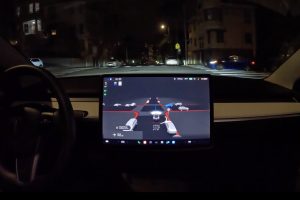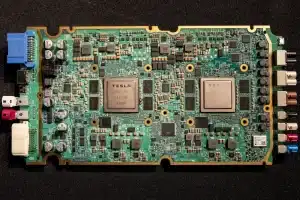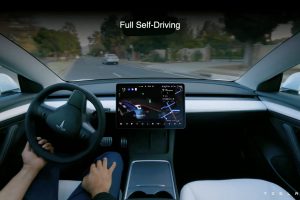- 🚗 Tesla is expanding the release of FSD V12.5.1.5 to more Hardware 3 vehicles, noted for better performance with a smaller model.
- 🤖 The update feels smoother, quicker, and more confident, especially in highway driving, according to user feedback.
- 🛣️ Highway driving is notably improved, with better anticipation of other cars’ movements and more decisive actions.
- 🦺 Some users noted that the update has excellent lane positioning and offers the best acceleration and braking performance yet.
- 🌙 Initial tests are positive but require further testing under varying conditions for a comprehensive evaluation.
- ⏳ There are concerns about how quickly older models will receive these latest updates.
As Tesla continues to push the boundaries of autonomous driving technology, the company has begun the rollout of Full Self-Driving (FSD) V12.5.1.5 to Hardware 3 vehicles. This latest update marks a significant step forward, promising improved performance and a smoother driving experience. In this blog post, we delve into the details of the update, gather insights from drivers who have tested it, and consider the implications for the future of Tesla vehicles.
The Journey to FSD V12.5: A Brief Overview
Tesla’s FSD technology has come a long way since its inception. Initially sold as an add-on for Enhanced Autopilot in 2016, it wasn’t until 2019 that Hardware 3 vehicles were fitted with the necessary technology. Fast forward to 2023, and the release of Hardware 4 saw another leap in capabilities.
Progress Overview:
- 2016 – Introduction of FSD as an add-on for Enhanced Autopilot.
- 2019 – Hardware 3 vehicles receive FSD support.
- 2023 – Launch of Hardware 4 with advanced FSD capabilities.
- 2024 – Rollout of FSD V12.5.1.5 to Hardware 3 vehicles.
Key Features of the FSD V12.5 Update
Tesla’s latest update for Hardware 3 vehicles includes several enhancements designed to improve the overall driving experience:
- Optimized Model Performance: The update has been noted for better performance with a more compact model, allowing Hardware 3 vehicles to simulate operations supported natively on AI4 hardware.
- Enhanced Smoothing and Response: Drivers report that the update provides a much smoother driving experience, with quicker and more confident decision-making.
- Improved Highway Functionality: One of the standout features is its ability to better anticipate and respond to other vehicles’ movements, making highway driving more seamless.
- Superior Lane Positioning and Dynamics: Enhanced lane positioning and significant improvements in acceleration and braking underscore the update’s focus on driving dynamics.
User Experiences and Feedback
Tesla drivers who have experienced the FSD V12.5 update have generally praised its performance:
- Initial Impressions: Users are reporting smoother and quicker driving experiences, with improved confidence in decision-making processes.
- Highway Improvements: Enhanced anticipation of other vehicles’ movements and more decisive highway actions are among the highlights.
- Performance Metrics: Superior lane positioning and the best acceleration and braking seen in any previous updates have been noted.
- Room for Improvement: While many drivers are impressed, some feel that more extensive testing under varying conditions is necessary to fully appreciate its capabilities.
Looking Ahead: Challenges and Considerations
While the FSD V12.5 update is a promising advancement, it brings to light certain challenges and considerations:
- Future Updates for Older Models: There is growing concern about the speed at which older Tesla models receive the latest software upgrades.
- Broadening Beta Testing: The need for continued testing across different environments and conditions is crucial to ensure reliability and performance.
- Technological Catch-Up: Maintaining parity between Hardware 3 and newer models in terms of FSD capabilities is an ongoing challenge.
Conclusion
Tesla’s FSD V12.5 update represents a pivotal moment in the evolution of self-driving technology. By leveraging a smaller, optimized model, the update harnesses the full potential of Hardware 3 vehicles, delivering a more refined and responsive driving experience. While the road ahead presents challenges, such as ensuring timely updates for older models, the advancements in technology underscore Tesla’s commitment to leading innovation in the field of autonomous driving.





